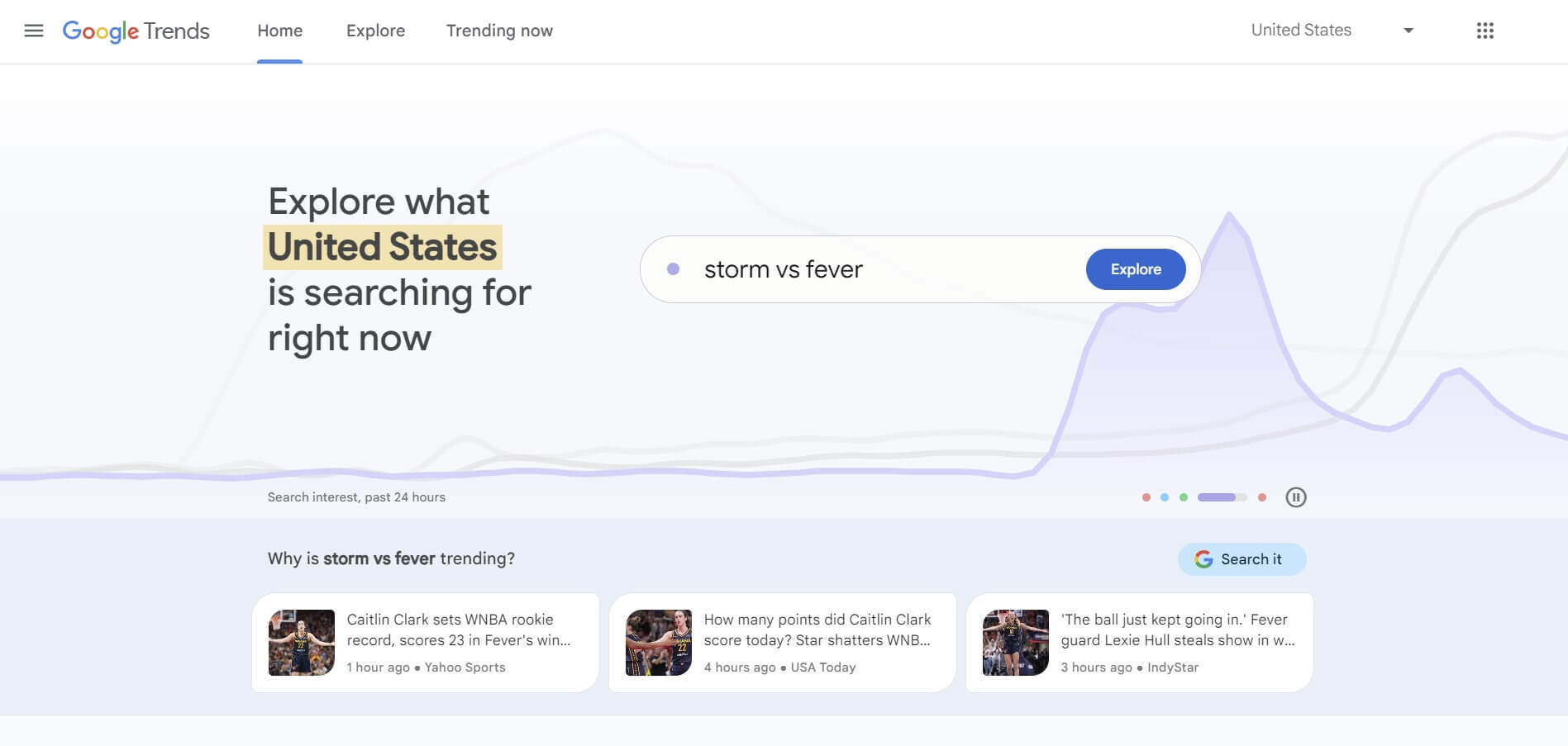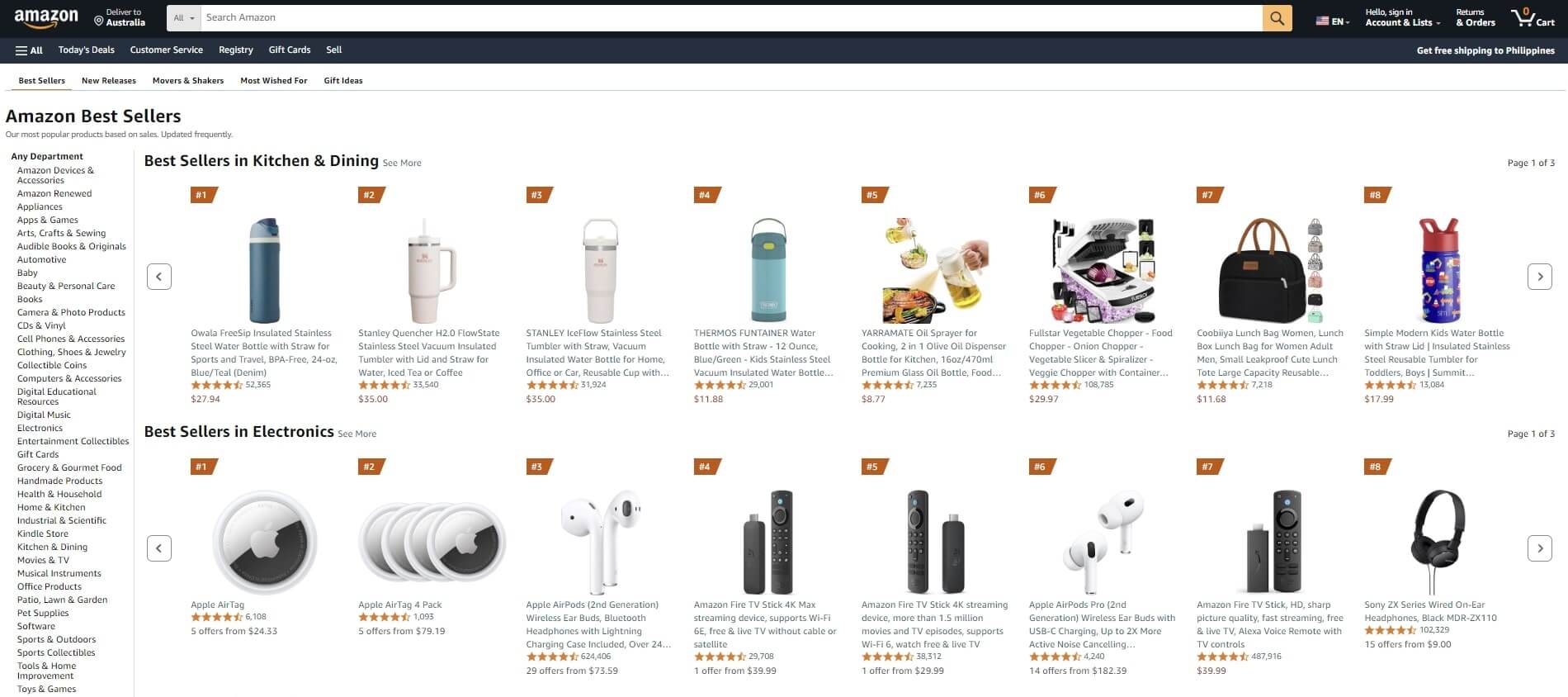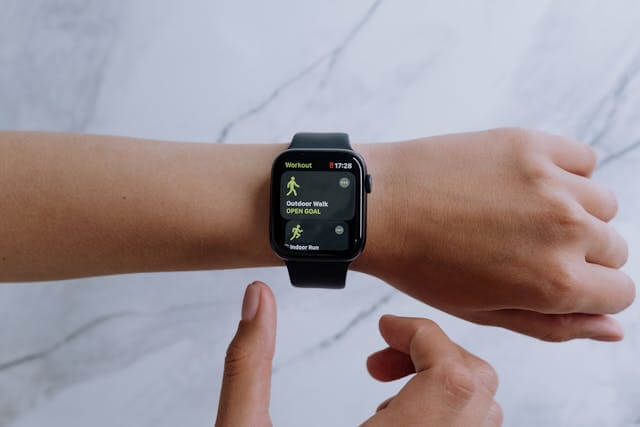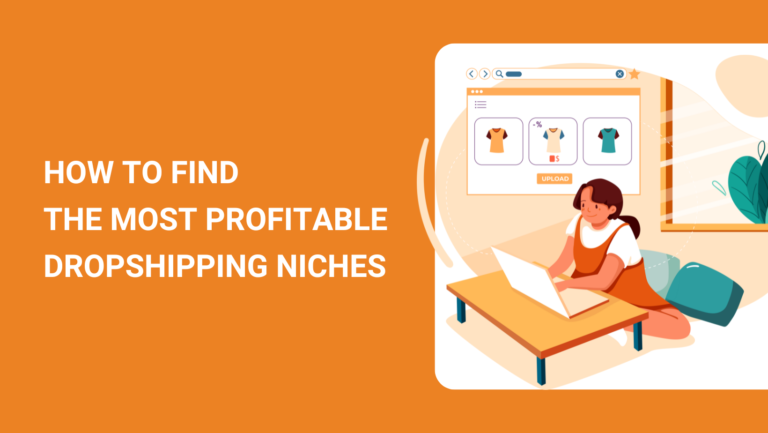Starting a dropshipping business can be an exciting venture, but selecting the right niche is crucial for success. Focusing on a specific niche can offer benefits such as reduced competition, targeted marketing, and higher customer loyalty.
In this article, you’ll find a comprehensive guide on identifying profitable dropshipping niches for 2024. From using tools like Google Trends to conducting market research, this post will help you find the best niches to build your dropshipping business.
You’ll also learn how to validate your chosen niche to ensure it has strong market demand and high profit margins.
Key Takeaways
- Select a specific niche to reduce competition and boost customer loyalty.
- Use tools and market research to find profitable niches.
- Validate your chosen niche’s demand and profit potential.
What Is a Dropshipping Niche?

A dropshipping niche refers to a specific segment of the market with unique and specialized products. Focusing on a niche helps you cater to a targeted audience rather than a broad market.
Think of it as narrowing down from selling “clothing” to “eco-friendly kids’ clothing.”
Finding the right niche can be crucial. Some dropshipping niches like women’s sportswear and pet accessories continue to be profitable due to high demand and specific target audiences.
These niches enable you to stand out in the competitive eCommerce landscape.
Characteristics of a Good Dropshipping Niche
- Specialization: A well-defined product category.
- Demand: Consistent customer interest and sales potential.
- Competition: Balance between competitors and market saturation.
- Profitability: High-margin products.
Examples of Lucrative Niches
- Health and wellness products
- Sustainable and eco-friendly goods
- Tech accessories
- Home office equipment
Why Niche Markets Matter
Niche markets allow you to become an expert in your specific category, attracting dedicated customers. An unsaturated market offers a ripe opportunity to carve out your space without directly competing with established brands.
In contrast, saturated dropshipping niches like generic phone cases face stiff competition, making it harder to establish a foothold. It’s wise to use tools to research demand and gain insights into current trends.
Ultimately, picking a niche and innovative approach can lead you to discover the best products to sell, ensuring your dropshipping business remains profitable and sets you apart from the crowd.
Tools and Methods for Finding Profitable Dropshipping Niches
1. Google Trends
Google Trends is a powerful tool for identifying lucrative dropshipping niches. With this tool, you can track the popularity of various keywords over time and gain insights into audience behavior and demand trends.

To use Google Trends for your research:
- Visit Google Trends and enter your potential niche or product keywords.
- Analyze the data: Look for rising trends and high search volumes. This indicates growing interest and potential profitability.
- Check seasonal demand: Compare the search volume over different time periods to identify any seasonal trends. This is crucial for planning inventory and marketing strategies.
Explore regions: Identify geographic locations where your niche is popular. This can help you target your marketing efforts effectively.Example: If you’re interested in the fitness niche, enter keywords like “fitness equipment” or “yoga mats.”
Look for keywords with increasing search volume and note if the interest peaks during certain times of the year, such as New Year’s resolutions.
Using Google Trends, you can also find related queries and topics. This feature can uncover additional niches or complementary products to expand your business.
Leverage these audience insights to refine your niche and focus on products with high demand. This strategic approach ensures you are not only entering a profitable market but also catering to the needs of your target audience effectively.
2. Market Research Tools
Popular Market Research Tools
To find the best dropshipping niches, you need the right market research tools. Here are some of the most effective tools to help you identify niche opportunities, analyze competition, and estimate demand:
- SEMrush: Provides insights on keyword trends, competition analysis, and traffic data. You can leverage these features to spot unsaturated dropshipping niches.
- Ahrefs: Known for its powerful backlink analysis and extensive keyword database. Ahrefs can help you find low-competition keywords relevant to your niche.
- Jungle Scout: A popular choice for Amazon sellers, it’s great for market analysis and product tracking. Jungle Scout helps you understand market trends and the profitability of your chosen niche.
- Helium 10: Another robust tool for Amazon, offering features like keyword research and product tracking to pinpoint profitable dropshipping niches.

Other Useful Tools
- Meta’s Audience Insights: Aggregates information about user behaviors and interests. This can help you identify trends and understand what products might appeal to your audience.
- Google Trends: An essential tool for tracking search interest over time. Google Trends helps you detect rising demand for specific products, ensuring your niche isn’t oversaturated.
Using these tools effectively can give you a competitive edge by ensuring you choose a niche with high demand and low competition.
Social media platforms are treasure troves for discovering profitable dropshipping niches.
Instagram is a visual platform perfect for spotting trending products. Use hashtags like #trending, #musthave, and #newarrivals to find popular items. Follow influencers in your target market and pay attention to what products they endorse.
Facebook offers numerous groups and marketplace listings where you can gauge consumer interest. Join groups related to your niche and observe discussions about popular products.
On Pinterest, users often create boards of their favorite products. Search for pins and boards with keywords relevant to your potential niche. Pay close attention to frequently pinned items as this indicates high interest.
TikTok Trends can be particularly revealing. Search for trending hashtags and observe viral videos to see what products are garnering attention. With millions of views, the potential for identifying popular niches is significant.
- Leverage Hashtags: Use niche-specific hashtags to discover trending products.
- Engage with Influencers: Follow and interact with influencers to spot new market trends.
- Social Listening Tools: Use tools like Hootsuite and BuzzSumo to analyze social media buzz and gather insights.
Analytics tools such as Google Trends and Facebook Insights can help you understand the popularity and demand metrics for various niches. Regularly check these tools to stay updated on shifting trends and consumer preferences.

Criteria for Selecting the Best Dropshipping Niches
When picking a niche for dropshipping, several factors can impact your success.
First, market demand is crucial. Use tools like Google Trends to see if there is sustained interest in your chosen niche. High demand ensures that your products will sell.
Competition plays a significant role. Measure competition by analyzing how many sellers are in your niche. High competition might suggest market saturation, making it harder to stand out. Aim for a PageRank of 3 to 4 for a balanced competition level.
Profit margins matter. Choose products where you can add higher profit margins. For example, consumer electronics and toys can be very lucrative. The toys and baby products niche alone has a projected market volume of $137.40 billion by 2025.
Here’s a simple checklist for selecting a dropshipping niche:
- Market Demand: Check Google Trends and keyword search volume.
- Competition Level: Aim for moderate competition to avoid market saturation.
- Profitability: Focus on niches with higher profit margins.
- Supplier Availability: Ensure reliable and quality suppliers.
- Scalability: Opt for a niche that allows growth and product diversification.
Evaluating these criteria will help you identify the best niche for dropshipping in 2024. For instance, a niche with a balanced competition level and high demand, like consumer electronics, could be very profitable.
1. Market Demand
Market demand is crucial when picking a niche for dropshipping. You need to find products with existing demand to ensure sustainability and profitability.
Steps to Evaluate Market Demand
- Search Volume: Use tools like Google Keyword Planner and Google Trends to identify popular search terms related to your niche. High search volume indicates strong demand.
- Social Media Engagement: Platforms like Instagram, Facebook, and Pinterest can help gauge interest. High engagement on related content indicates a thriving market.
- Sales Data: Check Amazon Best Sellers to see which products sell well. High sales figures suggest strong market demand.

Benefits of a Strong Market Demand
- Ensures a larger pool of potential customers.
- Higher chances for profits.
- Consistent sales.
Tools and Metrics
- Google Keyword Planner:
- Provides monthly search volume.
- Helps identify keyword competition.
- Google Trends:
- Offers data on search interest over time.
- Helps spot rising trends and avoid market saturation.
- Amazon Best Sellers:
- Lists top-selling products.
- Offers direct insights into what consumers are buying.
2. Profitability and Competition
Profitability is closely linked to market demand. High demand paired with low competition can lead to higher profit margins. However, beware of high competition and market saturation. Too many competitors can reduce your profits.
Choose a niche with manageable competition. Use tools like Ahrefs or MOZ to measure competition level. Target niches with fewer but dedicated players to maximize profit opportunities.
3. Competition Analysis
When choosing a niche for dropshipping, analyzing competition is crucial.
First, visit competitor stores and review product listings. Look for high ratings, popular products, and user reviews. This helps gauge customer preferences and market trends.
Tips for Finding Underserved Niches
- Identify gaps in the market: Check if there’s demand for products not widely available.
- Use competitor analysis tools: Tools like SEMrush and Ahrefs provide insights into your competitors’ SEO strategies.
- Evaluate profit margins: High competition often means lower profit margins, but identifying unique selling points can give you an edge.
Example Competition Metrics
| Metric | High Competition | Low Competition |
| Product Availability | Widely available | Rare or unique |
| SEO Keywords | Highly competitive | Less competitive |
| Advertising Costs | High | Moderate to low |
Assessing Profitability
Pick a niche with potential for high profitability. Look at factors like:
- Profit margins: Products with higher margins often perform better.
- Demand: Niche products like women’s clothing and sportswear are profitable in 2024, according to Printful.
By conducting a thorough competition analysis, you can find niches with high growth potential and avoid market saturation.
4. Profit Margins

Profit margins in dropshipping are crucial for your business’s success. They represent the difference between the cost of a product from suppliers and the price you sell it for, minus any additional expenses.
Calculating these margins helps you understand your financial gain and optimize your pricing strategy.
Formula for Profit Margin Calculation:
Profit Margin (%) = [(Selling Price – Cost of Goods Sold) / Selling Price] x 100
Benefits of Understanding Profit Margins:
- Better Pricing Strategies: Knowing your margins helps set competitive but profitable prices.
- Informed Decision Making: Assessing financial viability before adding products to your store.
Factors Affecting Profit Margins:
- Product Costs: Direct cost from suppliers.
- Shipping Fees: Costs to ship from the supplier to your customer.
- Selling Prices: The final price customers pay.
Tips for Maintaining Profit Margins:
- Negotiate with Suppliers: Lower product costs improve margins.
- Optimize Shipping: Choose suppliers with reasonable shipping fees.
- Track Market Trends: Ensure your niche isn’t oversaturated by checking demand and competition.
Strategies for Niche Validation
Validating a dropshipping niche helps confirm its potential profitability. Here are several strategies to do this effectively.
1. Analyzing Customer Reviews
Customer reviews are a goldmine for understanding preferences and pain points. To start, look at platforms like Amazon, eBay, and specialized forums. Use product reviews to gauge satisfaction levels and spot trends.
Key Steps to Analyze Reviews
- Identify Common Themes: Look for recurring issues or praises across multiple reviews. Do customers often mention poor quality or exceptional durability?
- Use Review Analysis Tools: Tools like ReviewMeta and Fakespot can help you analyze and filter genuine customer feedback.
How to Know if a Niche is Saturated or Profitable
Reviews can indicate if a niche is overly competitive. If many customers complain about similar products being too common or overpriced, it might signal saturation.
Conversely, frequent praise for unique features or innovation can indicate profitability and help you stand out.

Tips for Effective Analysis
- Create a Spreadsheet: Organize data from reviews. Columns can include qualities like “Durability”, “Design”, and “Customer Service”.
- Focus on Ratings Distribution: Are there more 5-star or 1-star reviews? Patterns here can reveal product strengths and weaknesses.
- Pay Attention to Dates: Trends change over time. Newer reviews are more relevant for current market demands.
Examples and Tools
For example, if you’re dropshipping home decor, check popular items like candles or curtains. Analyze feedback on online marketplaces’ home decor products for insights.
Keyword Analysis can help too. Tools like Ahrefs and SEMRush analyze search terms from reviews and identify what customers are searching for.
2. Testing Products
Testing products before fully committing to a dropshipping niche is crucial. This helps you understand customer preferences and market demand. Here are some effective ways to test products:
- Small-scale Sales: Start with a limited product range. Offer these items to a small audience and analyze the sales data. If a product sells well, it indicates potential for larger orders.
- Sample Orders: Order a few samples from different suppliers. Assess the product quality, shipping times, and customer service. Quality issues can affect customer satisfaction and returns.
- Pilot Campaigns: Run short-term marketing campaigns for your products. Utilize platforms like Facebook and Google Ads to reach targeted audiences. Measure the success through engagement and conversion rates.
Steps to Set Up Test Campaigns
- Identify Target Audience: Understand who will buy the product. Use tools like Google Analytics to gather demographic data.
- Create Engaging Ads: Design ads that highlight the benefits and unique features of the product. Clear and captivating images are essential.
- Set Budget and Duration: Allocate a small budget to minimize risk. Run the campaign for a limited period, such as one to two weeks.
- Monitor Performance: Track metrics like click-through rate (CTR), conversion rate, and return on ad spend (ROAS). Adjust strategies based on performance data.

Measuring Success
KPIs (Key Performance Indicators) such as sales numbers, market reach, and customer feedback are essential. A good conversion rate for eCommerce is typically around 2-3%. Use these metrics to decide if a product is worth scaling up.
Case studies, like the success of consumer electronics in dropshipping, show that testing phases are invaluable.
3. Competitor Analysis
When finding a profitable dropshipping niche, analyzing the competition is crucial. This helps you understand market demand and identify ways to stand out.
Start by searching for your product’s keywords on Google. Review the first-page results to see your main competitors. For a thorough competitor analysis, use tools like SEMrush and Ahrefs.
Key Areas to Focus On
- Product Offerings: Visit competitors’ websites to see their product range. Look for gaps where you can offer something unique.
- Pricing Strategies: Compare prices to determine if you can compete effectively. Tools like SEMrush can help analyze pricing trends.
- Marketing Tactics: Observe their social media and advertising campaigns. Tools like SimilarWeb can provide insights into their traffic sources and marketing efforts.
Here is an example of how to use these tools:
| Tool | Purpose |
| SEMrush | Keyword research and pricing trends |
| Ahrefs | Competitor website analysis |
| SimilarWeb | Traffic and marketing insights |
To know if a niche is saturated or profitable, consider the competition and demand. A saturated niche has many competitors, making it hard to stand out.
On the other hand, a niche with consistent demand but fewer competitors can be more profitable.
Tips to Stand Out
- Offer unique products or variations
- Provide exceptional customer service
- Use creative marketing strategies
Remember to routinely visit competitor websites to stay updated on their products, prices, and marketing tactics. This ongoing analysis will keep you informed and help refine your strategy.
Popular and Profitable Dropshipping Niches for 2024
Finding profitable dropshipping niches can significantly impact your success. In 2024, several niches stand out for their potential.
1. Sustainability and Eco-Friendly Products

The growing trend towards sustainability has led to a surge in demand for eco-friendly products. More consumers are choosing green options to reduce their environmental impact.
Consumers are increasingly aware of environmental issues. They prefer products that are sustainable and ethically produced. This shift in consumer behavior represents a valuable opportunity for dropshippers.
Pros
- High Demand: Sustainable products are in high demand due to increasing environmental awareness.
- Positive Brand Image: Offering eco-friendly products can enhance your brand’s reputation.
- Contributing to Sustainability: By selling green products, you’re supporting environmental sustainability.
Cons
- Higher Product Costs: Eco-friendly items often cost more to produce, raising your expense.
- Limited Suppliers: Finding reliable suppliers for sustainable products can be challenging.
To tap into this niche, consider products like reusable shopping bags, eco shoe inserts, and sustainable household items. Platforms like GreenDropShip offer over 20,000 eco-friendly items in various categories.
Engaging in eco-friendly dropshipping allows you to meet market demands while promoting sustainability. It’s a niche worth exploring for both profitability and environmental impact.
2. Health and Wellness
The health and wellness niche includes a variety of products such as supplements, fitness equipment, and wellness gadgets. Items like yoga mats, alleviating balms, and CBD products are popular in this niche.
This market is rapidly growing. From 2023 to 2032, it has an expected compound annual growth rate (CAGR) of 5.5%. The global wellness industry could exceed USD 8,945.3 billion by 2032 according to a recent report.
Pros
- Strong Demand: Consumers are increasingly focused on both physical and emotional well-being.
- Recurring Purchases: Products like supplements often need to be reordered, ensuring regular sales.
Cons
- Regulatory Compliance: You need to navigate strict regulations, especially with products like CBD.
- High Competition: Many businesses are entering this lucrative market, creating stiff competition.
3. Home and Kitchen

The home and kitchen niche is a lucrative area for dropshipping. Popular items include kitchen gadgets, home decor, and storage solutions.
Examples include aprons, towels, blankets, and wall art. With so many options, you can easily find products that align with current trends.
Consumers are increasingly interested in home improvement and organization. 54% of people are cooking more frequently at home. This creates demand for practical and stylish kitchen products.
Pros
- High Demand: Products in this niche are always in demand, and trends like home cooking boost sales.
- Broad Range: There is a wide variety of items to choose from, allowing flexibility in your inventory.
Cons
- Inventory Management: Keeping up with stock levels can be difficult, especially during high sales periods.
- Shipping Costs: Larger kitchen and home items can incur higher shipping charges, affecting your profit margins.
4. Pet Supplies
The pet supplies niche covers a broad range of products, including pet food, toys, accessories, and grooming items.
Products like dog food, cat toys, and aquarium accessories are among the popular choices. Many suppliers now offer diverse items, from wooden pet gates to luxury pet furniture.
The market for pet products is expanding rapidly. In 2023, the global pet care market reached $232 billion, expected to grow significantly in the coming years.
Pet owners are increasingly willing to spend on premium products, which creates a strong market opportunity.
Pros
- Strong Demand: High demand for essentials like pet food and grooming products.
- Repeat Purchases: Consumable products ensure recurring orders.
- Emotional Purchases: Pet owners often spend extravagantly on their pets, leading to increased sales.
Cons
- Product Variety: Managing inventory for a wide range of products can be complex.
- Competition: High competition from established retailers and other dropshippers.
5. Tech and Gadgets

The tech and gadgets niche includes popular products like smart devices, accessories, and wearables. Items such as smartwatches, Bluetooth earbuds, phone accessories, and fitness trackers are in high demand.
Consumers love staying updated with the latest technology and innovations. Each year, new devices hit the market, promising better performance and unique features.
In 2023, global tech sales reached $5.8 trillion and are projected to exceed $6.3 trillion by 2024.
Pros
- High Demand: Gadgets are a constant necessity, driven by innovations and consumer interest.
- High-Profit Margins: Many tech products can be marked up significantly while still being attractive to buyers.
- Frequent Upgrades: Customers often upgrade their devices, ensuring continuous demand.
Cons
- Rapid Obsolescence: Technology evolves quickly, making some products obsolete within a year.
- Competition: The market is highly competitive, with numerous sellers vying for consumer attention.
- Inventory Management: Keeping up with the latest trends requires effective inventory management.
Dropshipping Niches to Avoid
When considering a niche for your dropshipping business, it’s as crucial to know what to avoid as it is to know what to choose. Here are some dropshipping niches that might not deliver the best results:
1. Products You Can’t Advertise
When choosing products for dropshipping, it’s essential to be aware of advertising restrictions on platforms like Facebook and Google.
Adult Products: Items such as adult toys, explicit content, and adult services often face strict advertising bans. These products can be difficult to promote online and may violate platform policies.
Tobacco-Related Items: Cigarettes, cigars, and vaping devices are also commonly restricted. Both Facebook and Google have strict policies against promoting tobacco products due to health concerns and legal regulations.
Pharmaceuticals and Supplements: Many pharmaceutical and supplement products face advertising restrictions. Claims about health benefits and drug efficacy must be backed by scientific evidence, making it challenging to meet compliance.

Weapons and Explosives: Anything related to firearms, explosives, and other weapons are typically banned from advertising. This includes not just actual weapons but also accessories and replicas.
Platforms’ Advertising Policies
Always check the specific advertising policies of the platforms you plan to use. Here are links to the guidelines for major platforms:
Tips for Identifying Restricted Products
- Review Platform Policies: Regularly check the advertising policy pages of platforms to stay informed about what you can and cannot promote.
- Avoid High-Risk Niches: Steering clear of high-risk categories like adult content and tobacco products can save you time and trouble.
- Consult Experts: If you’re unsure whether a product faces restrictions, consult an eCommerce or legal expert to clarify.
2. Large Products
Dropshipping large products comes with unique challenges, such as high shipping costs and logistical issues. These factors can affect your profit margins and customer satisfaction.
Large and bulky items can be expensive to ship. For example, the shipping cost for home appliances can be significant. You should also consider storage and handling costs.
Here’s a list of large products that can be tricky to dropship:
- Furniture
- Home appliances
- Fitness equipment
Shipping costs for these items can easily exceed $100. Additionally, they may require special handling and insurance.
Shipping and Handling Considerations
Ensure that your suppliers have experience in shipping large items. Check if they offer drop-off services and tracking options to ensure smooth delivery. Verify their packaging standards to avoid damage during transit.
Logistics
Handling returns for large items can be complex. Make sure you have a clear return policy and that your supplier can manage returns efficiently. Large items often have higher return rates, which could impact your business.
Consider reading logistics and shipping guides for further insights into effective strategies.
Ultimately, while dropshipping large products can be profitable, the associated challenges require careful planning and reliable partnerships.
3. Potentially Dangerous Products

When dropshipping, it’s crucial to be aware of products that could pose risks. Potentially dangerous products include items like hazardous materials and weapons.
Examples of Dangerous Products
- Weapons: Firearms, non-culinary knives, and anything that can be used as a weapon.
- Hazardous Materials: Chemicals, explosives, and items containing toxic substances.
Risks to Consider
Dropshipping these items can lead to severe consequences:
- Legal Issues: Many countries have strict laws regarding the sale and shipment of weapons and hazardous materials.
- Shipping Challenges: These products often require special packaging and handling.
- Customer Safety: There is a higher risk of accidents and injuries.
Safety Regulations
To avoid selling dangerous products:
- Follow guidelines set by bodies like the Consumer Product Safety Commission (CPSC).
- Check regulations on platforms like Facebook which restrict advertising certain items.
Tips for Avoiding Dangerous Products
- Do Your Research: Make sure to understand the legal restrictions in your target market.
- Consult Compliance Guides: Use resources for specific examples of what to avoid.
- Use Safe Suppliers: Choose suppliers known for adhering to safety standards and regulations.
4. Delicate Products
When dropshipping delicate products, you should be aware of the potential challenges. These items, such as glassware, ceramics, and electronics, are at high risk of damage during shipping. This risk leads to increased returns and potentially unhappy customers.
Challenges:
- High Risk of Damage: Fragile items can easily break during transportation.
- Increased Returns: Higher likelihood of returns due to damage, leading to additional costs.
- Packaging Costs: Extra expenses for protective packaging materials.
Examples of Delicate Products to Avoid
- Glassware: Wine glasses, vases, or decorative items.
- Ceramics: Porcelain dishes, pottery, and ceramic tiles.
- Electronics: Tablets, smartphones, and other sensitive devices.
- Art: Paintings, sculptures, and other art pieces that can get damaged or bent.

Packaging and Shipping Best Practices
- Use Bubble Wrap: Wrap each item individually with bubble wrap to provide a cushion.
- Double Boxing: Place the wrapped item in one box, then put that box into a larger one with additional cushioning materials.
- Fragile Labels: Clearly mark all packages containing fragile items with “Fragile” stickers to alert shipping handlers.
- Quality Control: Ensure products are thoroughly inspected before shipping to guarantee they are in perfect condition.
5. Unregulated Health Products
Dropshipping unregulated health products like supplements and medical devices can pose significant risks for your business and customers.
Such products may lack proper testing and approvals from regulatory bodies like the FDA.
This can lead to safety issues, legal troubles, and damaged reputations.
Risks Involved
- Health and safety hazards: Products without proper testing could harm users.
- Legal ramifications: Selling unapproved products may result in fines or business shutdowns.
- Reputation damage: Customer complaints about side effects can tarnish your brand.
Unregulated health products are also restricted on platforms like Facebook, which bans their advertisement.
Ensuring Compliance
To avoid these issues:
- Verify suppliers: Choose reputable suppliers with verified products.
- Check certifications: Ensure products have necessary certifications and approvals.
- Stay updated: Be aware of regulatory changes and adjust your inventory accordingly.
Regulatory Guidelines
FDA guidelines state that all health products must meet specific standards before selling in the U.S.
Refer to official FDA guidelines for detailed information.
FAQs about Dropshipping Niches
Finding a profitable dropshipping niche requires careful market research, understanding market saturation, and staying updated with current trends. Below, you’ll find answers to some of the most common questions asked by dropshippers.
How to Know If a Niche Is Saturated or Profitable?
To evaluate if a niche is saturated, start by analyzing your competitors. Use tools like Google Trends, SEMrush, and Ahrefs to understand market volume and trends.
Assess profitability by researching demand and consumer interest. Look at sales data and read eCommerce guides. A niche with high demand but manageable competition is often profitable.
What Is the Most Profitable Product to Dropship?
Some of the most profitable products to dropship include fitness gear, home office supplies, and skincare products. These items are in high demand and have good profit margins.
Market analysis shows that products like ergonomic office chairs and natural skincare products are currently trending. Keep up with consumer demands to stay ahead.
Which Niche Is Best for Dropshipping in 2024?
In 2024, some of the best niches include eco-friendly products, smart home devices, and pet supplies. According to market projections, these markets are expected to grow significantly.
Keep an eye on market research reports to stay informed about the latest trends and opportunities in these niches.
How to Pick a Niche for Dropshipping?
Start by listing your interests and passions. Then conduct thorough market research using tools like Google Trends and Statista.
Analyze the competition and assess the profitability of the niche by evaluating demand and potential profit margins. Using this structured approach will help you find the right niche.
Wrapping Up: Effective Strategies to Find Dropshipping Niches
Finding profitable dropshipping niches involves a combination of research, market analysis, and strategic thinking.
1. Identify Demand: Use tools to research demand. Look for products with rising interest on Google Trends or high search volume on platforms like Amazon. This helps ensure there’s a market for your products.
2. Evaluate Competition: Conduct a competitive analysis. Check the number of sellers and their customer reviews. High competition might indicate demand, but too much can make it hard to stand out.
3. Focus on Profitability: Evaluate margins carefully. Opt for products with high profit margins. Remember, shipping costs and supplier fees can affect profitability.
4. Target Specific Niches: Choose focused niches within larger markets. For instance, within the home decor market, you might target minimalist decor, which has seen considerable growth this year.
5. Use Data Analytics: Leverage data from sales platforms to understand purchasing trends. Utilize reports like those from Statista which forecast e-commerce growth.
By following these steps, you can identify profitable and in-demand dropshipping niches for your business.
If you’ve already found your dropshipping niche and are looking for a professional sourcing agent to help you scale up your business then our company can guide you with everything you need.
Request a sourcing quote to get started!

